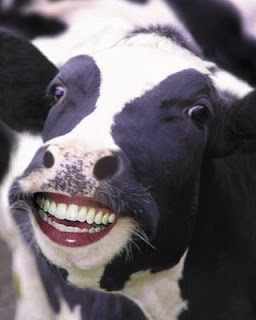This week I went to the first nine dairy farms on which I administered my survey from the summer. These nine farms were everywhere from Westphalia, St. Johns,
Litchfield,
Conklin, to
Pentwater. Some farms were only milking 30 cows and other others 330. One thing they all seemed to have in common was that they thought the Milking System Performance Assurance Program was very worthwhile and helpful. With field staff from
MMPA coming out several times a year, there was an extra set of trained, skilled eyes that were able to detect problems with the milking equipment or cleaning system and could correct them before there were any negative effects seen in the cows' production or the quality of the milk. There has also been some constructive criticism which I'm sure will be very helpful to
MMPA as they consider changes to this program in the future. Along the way to these various farms this week, I was allowed to be a "sightseer" in my own state with landmarks such as Michigan International Speedway, state historical landmarks, bicentennial farms, and some beautiful rural landscape.




There were also some meetings I went to throughout the week.
MMPA is working with an animal behaviorist in Michigan State University's Animal Science Department to establish some general dairy cow welfare protocol. With this they hope to give producers some guidelines they can easily go through on their own and with their veterinarian and other specialists to easily assure all of their animals' welfare needs are being met. I also attended my second Be Aware Be Prepared meeting where the plans for an upcoming simulated Foot and Mouth Disease outbreak and containment exercise were finalized. I traveled down to
Shipshewana, IN with
MMPA, Michigan Department of Agriculture, and Michigan State University Extension for a meeting withe Indiana Department of Agriculture. They are working on establishing a program called Certified Livestock Producer Program which is similar to Michigan's
MAEAP (Michigan Agriculture Environmental Assurance Program).
MAEAP is a voluntary program farmers can participate in and become certified signifying they are engaging in cost-effective pollution prevention practices and complying with state and federal environmental regulations. Indiana's program will be similar to this but will also encompass animal well being, food safety, emergency planning,
biosecurity, and being a good neighbor.



























